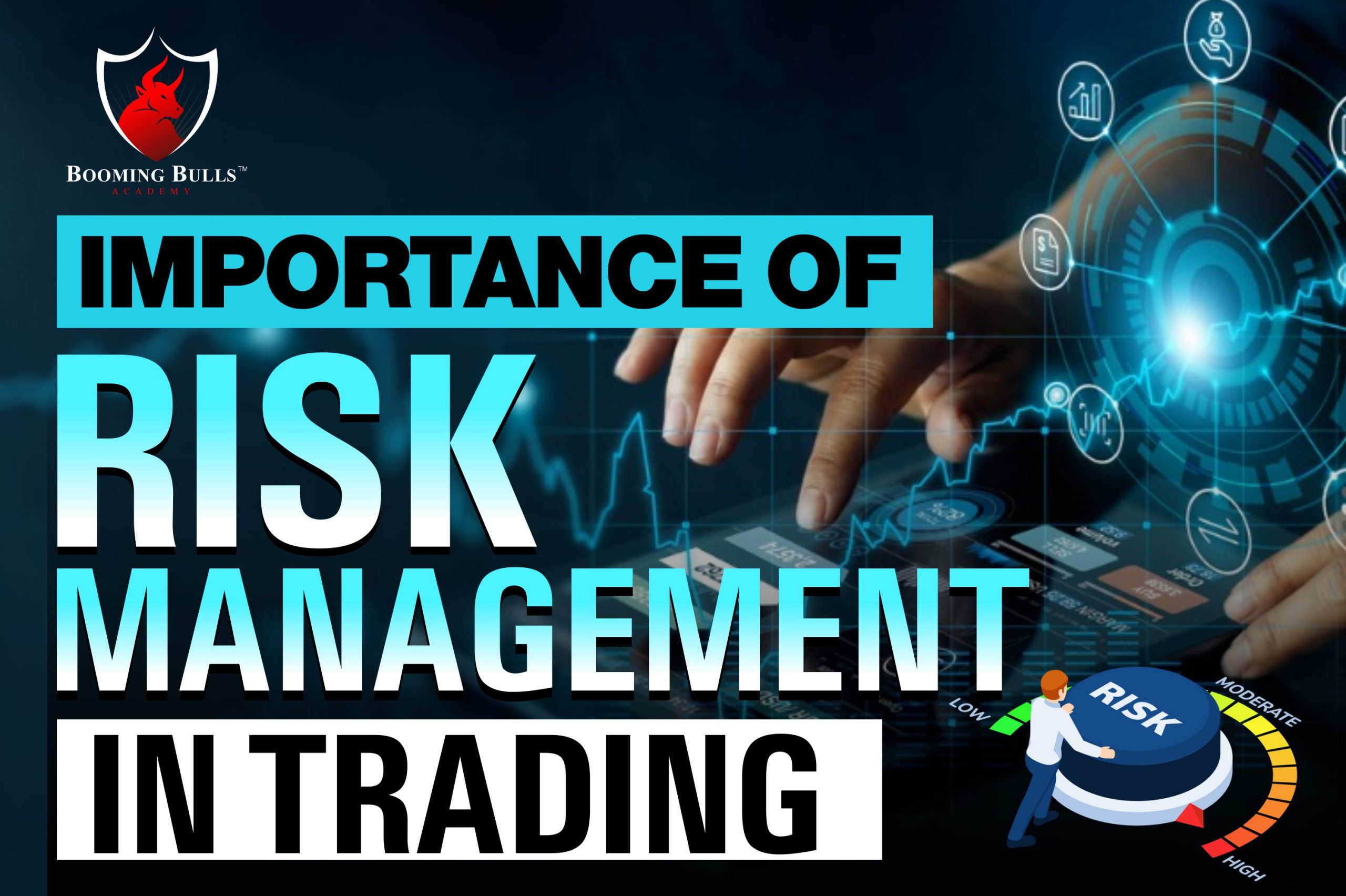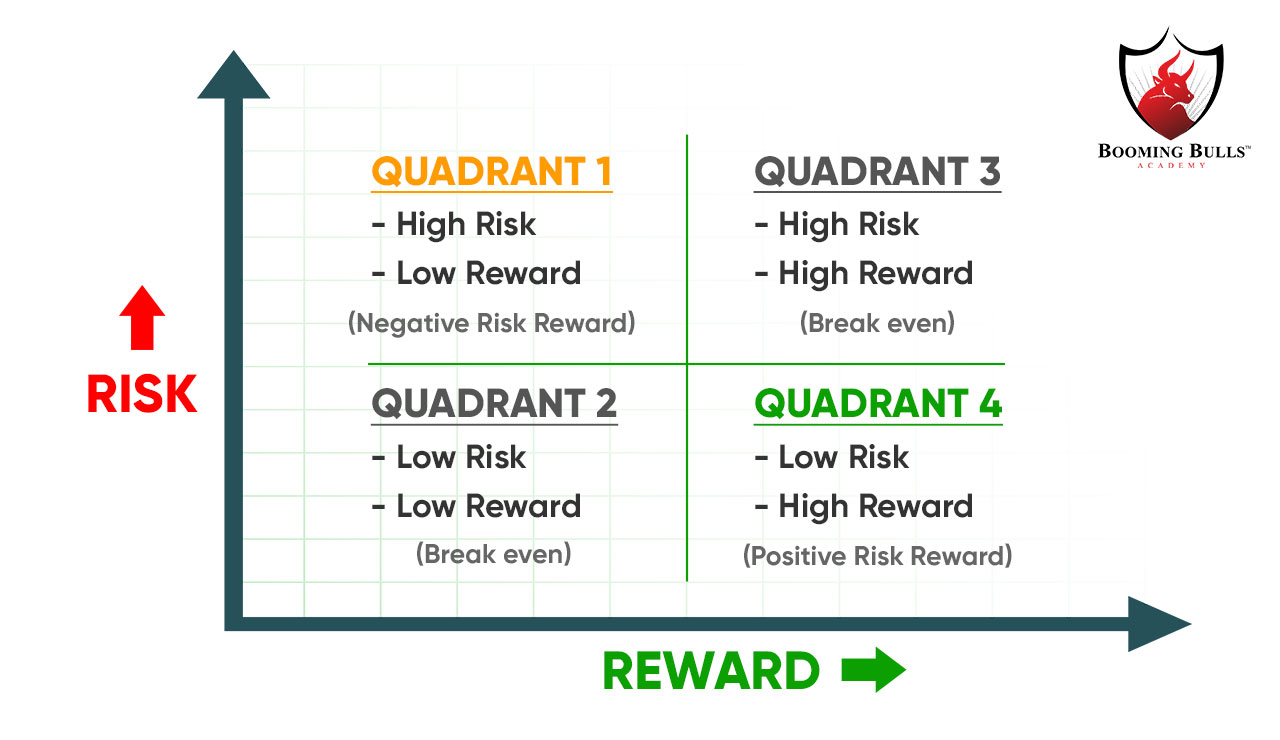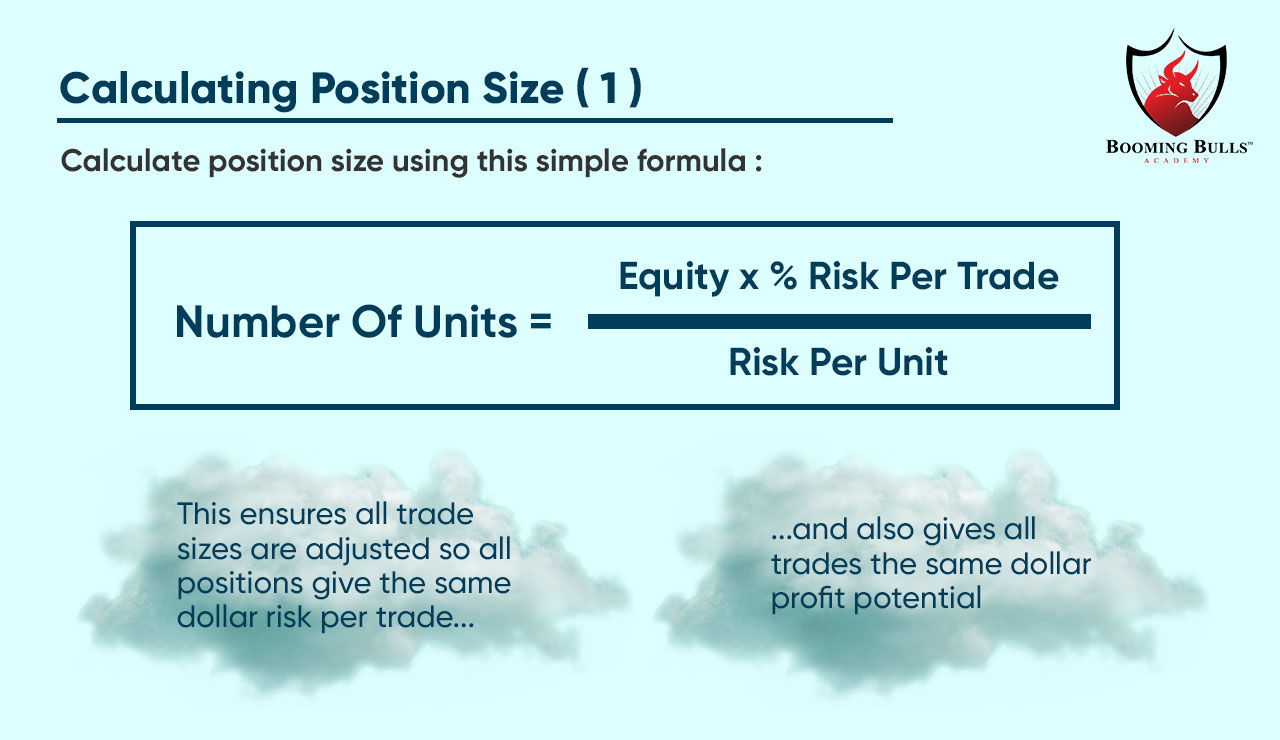

Risk Management is one of the most important pillars of successful trading. Key Points regarding Risk Management:
Without risk management in trading, no trader can make consistent profits for a long period of time.
Without risk management, there is a strong possibility that a trader may end up blowing all their trading capital even if they have the best trading strategy.
Every trader needs to learn everything about risk management and then start trading. Through this article, we have explained to you the most important concepts of risk management that every trader should know about.
Every trader takes some amount of Risk for every rupee reward that trader earns. Risk management is how a trader manages that Risk and comes out profitable over a series of trades.
For example, let’s say a trade aims for 100 rupees profit and takes the Risk of Rs. 50, then, in that case, for every two rupees, the trader is risking one rupee, and that is a good risk-to-reward ratio to trade with. On the other hand, if a trader aims for Rs. 100 profit and he is risking Rs. 200 for it, then, in that case, he is risking more than what he potentially would get, and that is a bad approach to trading.

The above example establishes the importance of the risk-to-reward ratio in trading. The risk-to-reward ratio is nothing but the Risk taken for every rupee earned. Let’s take the above example; let’s say a trader aims for 100 rupees profit and takes the Risk of Rs.50; then, in that case, the risk-to-reward ratio is 1:2 (Risk – 1: Reward – 2), which is a good risk-to-reward ratio.
Generally, trades with good risk-to-reward ratios, such as 1:2 or 1:1.5 or 1:3, are preferred rather than the trades that offer bad risk-to-reward ratios, such as 1.5:1 or 2:1 because you are risking more money than you would potentially make. Therefore, you should never take trades with bad risk-to-reward ratios. This is the most fundamental rule of risk management in trading.
By now, you must have understood the importance of risk management in trading. Now, we will see how we can apply certain risk management principles while trading so that you, as a trader, can make consistent and long-lasting profits.
There are some fundamental rules of trading that every trader must follow while trading:
Do not lose more than a specific percentage of the amount: this is a fundamental and the most effective way to control your losses as a trader. To become a profitable trader, you must cut your losing trades and hold your winning trades.

By predetermining your Risk, you work to eliminate the possibility of a big loss, and that is how you win in the long term. For example, let’s say that you are trading with Rs.1 Lakh account, and you take a 2% risk on every trade. So, you only risk Rs.2,000 on every trade, including brokerage, taxes and other charges. This is how the 2% rule works in trading. Also, it is not mandatory to only risk 2%; you can also increase or decrease the percentage of Risk you take, depending on your trading style and the reward you are aiming for.
Whenever you place a trade, it is mandatory to place a stop-loss. Without a stop loss, trading is like a vehicle with failed brakes which is bound to crash sooner or later. Stop-loss saves you from big losses that can blow your trading account in a single trade. As we say, in trading, being wrong is not a mistake, but staying wrong is. So, when your stop-loss gets hit, you should always accept that stop-loss without any emotional barrier.
Some traders place stop loss in a system, and others place stop loss in their mind, and when they see their stop loss is hitting, they exit the trade without any hesitation. As a beginner trader, one should always place their stop loss in a system as initially, a trader may not have the right trading psychology and courage to exit the trade at the right time.
Position sizing is nothing but the quantities of shares or contracts you want to trade. Position sizing is totally based on the amount of stop loss and the amount of capital you want to risk in a particular trade.

The formula for position sizing is Risk per trade (Amount) / Stop loss value. Let’s say your Risk per trade is Rs.2000, and your stop loss is Rs.10. In that case, if we divide 2000 by 10, we get 200. So, in this case, you cannot trade more than 200 quantities in that trade. This is how position size is calculated to manage your Risk each time.
In trading, we make money at the exit. So, knowing the best time to exit the trade is important. In order to become a profitable trader, you should place your stop loss and target logically.
Also, using a trailing stop-loss is a must so that you can manage your Risk timely and come out with some profit.
Many people do not use trailing stop loss, converting their winning trade into a losing one. You need a perfect exit strategy to tell you when to exit your trade. Generally, traders do not use any exit strategy, and this, usually, is the biggest lacuna in their risk management strategy because if you do not know when to exit the trade, then it will be almost impossible for you to make consistent profits.
Let’s take a look at a practical example of how risk management plays an important role in trading. Consider two traders, one follows some risk management rules like 2% rule, trailing stop loss etc., and the other does not follow any risk management principles.
Now, let’s say they have a losing streak and have consecutively lost 5 to 6 trades. Because of risk management rules, the first trader only loses 10% to 12% of the account, while the other trader may blow his entire account in just 5 to 6 trades. This is how risk management saves your capital erosion.
However, just setting risk management rules for yourself is not enough, you also have to follow them religiously to see good results. Often, many traders set rules for themselves but do not follow them because they let their emotions get the better of them, and emotions are the enemy of good trading.
Options are high-risk and high-reward trading instruments, and it isn’t easy to trade in them because they contain a lot of risks and are quite volatile when compared to equity trading.
Hence, in options, there are some basic risk management principles which you should follow.
Another important thing to understand is, if you are new to trading and haven’t traded in equity, you should first try trading in equity and becoming profitable for a couple of months. Once you are familiar with the basic trading rules, only then should you try options trading with one or two lots.
Now, we will discuss some risk management rules you can use while trading options.
As an option buyer, you should only 25% to 30% of your capital in a single trade. The most common mistake that most options buyers make is using their entire capital in one trade and trading in heavy quantities with the hope of greater profit.
Another risk management rule for option buyers is never to trade out of-the-money options, especially on an expiry day. Many new traders try to trade these Out of Money options, and most end up losing money. They think they are cheap options and will be less risky, but in reality, the situation is exactly the opposite. Most of the Out of Money Options tend to go to 0, which is why they are cheap in price and contain the maximum Risk of loss. So, as an option buyer, you should avoid taking out-of-the-money options.
As an option seller, there are some risk management rules you must take note of. For example, you should never trade without a stop loss or a hedge. If you are an option seller, you contain an unlimited risk, which is why it is important to understand the importance of stop loss. Option seller makes a profit most of the time by selling out-of-the-money options, but they can lose all that money plus more in a single trade if they do not get out at the right time. So, as an option Seller, your win rate is more. On the other hand, as an option buyer, your winning size should be more.
Conquering the fear of losses is the most important part of trading success. If you fear making losses, you will never learn new things nor improve your trading.
We often say that fear has its roots in the unknown. In the trading business, everything is uncertain. No one knows what will happen in the next moment, so fear is natural when doing such a business. But controlling that fear by keeping yourself calm in heated situations and following the established process defines your profitability. By setting up the stop loss, we can pre-define our losses and eventually eliminate the fear of making huge losses. This is how you can control your fear of trading.
Risk Management is the most effective way to control and even eliminate your fears. Generally, profitable traders are good risk managers first. Almost all the great traders of the world have been great at managing risks and that is how they became the top names in the field.
Despite doing your best to manage every Risk, there are some risks in trading that cannot be avoided, such as a technical problem at the exchange, for which, there’s no remedy at your end. Or there can be a technical problem from the brokers’ end, in which case, if you have a backup account with some other broker, then you can take counter positions; otherwise, there isn’t much you can do about your plight.
The good news is that these incidents do not take place very often, and even when they do, these situations are resolved rather quickly.
Trading Psychology and risk management are two different concepts and practices that are closely related to each other. In order to make a sustainable trading career, you need to master both of these.
Risk Management is nothing but strategy development, and trading psychology is the execution of that strategy with 100% efficiency. If you have a good risk management strategy but you are unable to follow that strategy due to improper trading psychology, then that strategy is worthless.

In order to improve your trading psychology, you need to work on both your mind and body. Also, you need to constantly go through the best trading books and other literature so as to learn from others’ experiences. As a trader, your psychology is your weapon and it plays a very important role in defining profitability. That is why more than any trading strategy or technical analysis, it is your trading psychology that matters.
There are many trading strategies available freely over the internet, but you need to have the right trading mindset to make money from that strategy. Often, amateur traders give more importance to their strategy rather than their psychology, and that is the key reason why they fail in trading at the initial stage.
Trading is serious business, and in order to make money from it, you need to focus on the three most important aspects:
You need to master all three in order to make consistent profits in trading.
Risk management saves you from capital erosion. You may have a good strategy but if you lack good risk management in trading, you will inevitably end up with more losses than wins.
Before taking any trade, you need to check some risk management criteria such as Risk per trade, the risk-to-reward ratio, position sizing, etc., so that there is no confusion or fear after taking that trade.
Risk management eliminates the fear of trading by predetermining losses. When you become fearless, you can perform with 100% efficiency.
Trading psychology and risk management are closely related, and you must master both aspects in order to become a profitable trader. I hope that this article taught you the importance of risk management in trading.
To summarize this article, I would say with good risk management rules, some technical analysis, and risk management principles; anyone can make a profitable trading system and earn consistent profits from the market.
If you like this article, don’t forget to share it with us across all your social media handles.
Happy learning!
Open a Demat Account using our link to get support from us – https://bit.ly/3gyhIWN and send your ID to [email protected]
Nice
Thank you so much
I think it’s a good content thank u so much